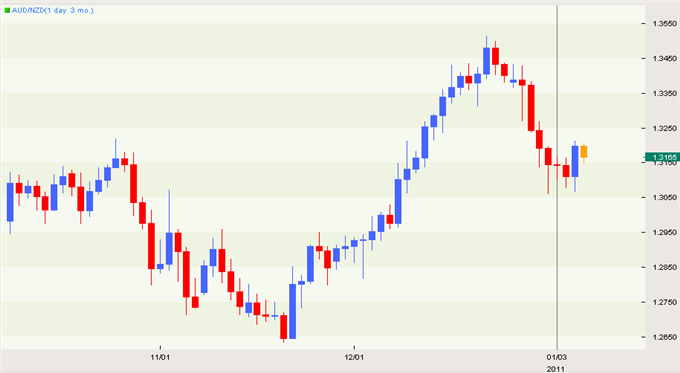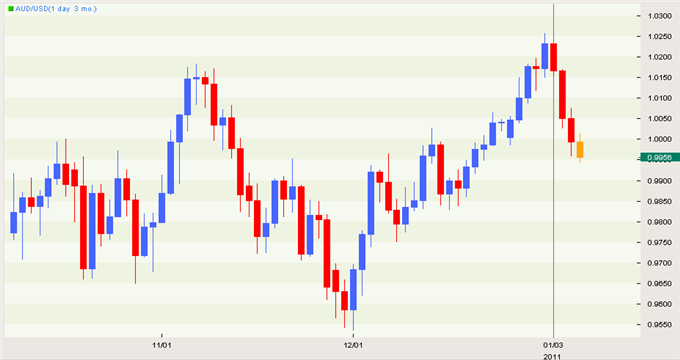http://www.dailyfx.com/forex/fundamental/article/special_report/2011/01/06/Queensland_Floods_Impact_to_the_Australian_Dollar_is_Seen_as_Modest.html
“A disaster of biblical proportions.” That’s what State Treasurer Andrew Fraser called the record floods that have battered Queensland, a large state in northeast Australia. What began as a page-16 story has now made its way to the front page as economists scramble to update their forecasts for growth not only in Queensland, but for Australia as a whole.
Furthermore, because Queensland is a major exporter, the repercussions are global. Prices for many commodities have spiked higher on fears that supply will be reduced by this natural disaster. The greatest impact seems to be on coal markets. As the largest exporter of the commodity in the world, Australia is responsible for supplying coal to some of the major emerging market economies in Asia. Benchmark prices have spiked 17% since last week as markets realized the extent of the situation. Specifically, 75% of Queensland’s coal production has been halted in response to the floods.
Another commodity that has been affected is wheat. It is possible that much of the Queensland’s output has been destroyed due to the unusual weather conditions. But as the region only produces about 5% of Australia’s total output, the impact on this market is not as severe. Other markets that have been affected include that for sugar and cotton.
If there is any silver lining to the devastation of these floods, it is the boost in commodity prices. Australia is still one of the largest commodity exporters in the world and thus these higher prices will help offset the negative economic impact from the reduction in output and exports.
Another cost of these floods is the damage done to infrastructure. Queensland’s premier has said that the damage to the state’s infrastructure has been “catastrophic.” Transportation systems in particular have been badly damaged, which incidentally, could lead to reduced coal exports for some time.
But what financial markets are most concerned about is the overall impact to the Australian economy from these floods. Estimates have generally been for a reduction of 0.2% to 0.5% in 2011 GDP, or several billion dollars in total damage. This is relatively modest when you consider that the consensus estimate for growth in the Australian economy before the floods was in the neighborhood of 3.7%, well above estimates for other developed economies such as the U.S (2.6%), Euro-Zone (1.5%), UK (2%), or Canada (2.4%).
Nevertheless, the floods have given the Reserve Bank of Australia- which was already on pause- another reason to hold rates steady in the coming months. Market interest rate expectations have fallen with overnight index swaps suggesting that the central bank will only hike rates one time throughout the year. Expectations were closer to two hikes only a week ago. This has pressured the Australian Dollar, although we have seen most U.S-Dollar rivals decline over the last few days, making it difficult to separate the flood impact from the general U.S. Dollar bullishness. If we look at the Aussie versus a competing carry currency such as the Kiwi, it actually hasn’t fallen at all, suggesting that the event has only had a modest impact on forex markets.
AUD/NZD Daily Chart:

AUD/USD Daily Chart:

DailyFX provides forex news on the economic reports and political events that influence the currency market.
Learn currency trading with a free practice account and charts from FXCM.
Learn currency trading with a free practice account and charts from FXCM.
No comments:
Post a Comment